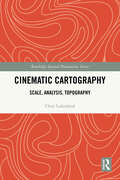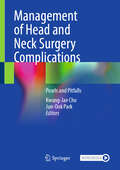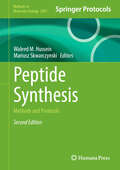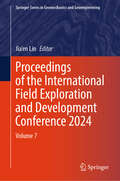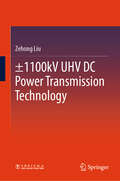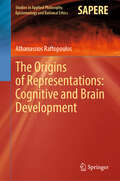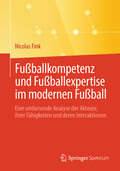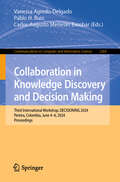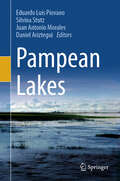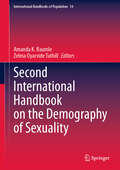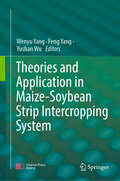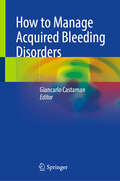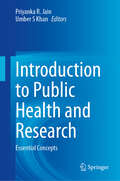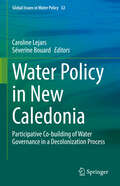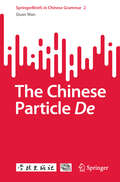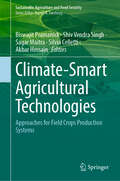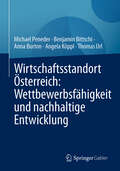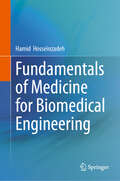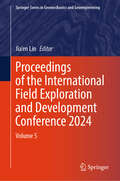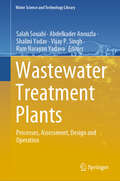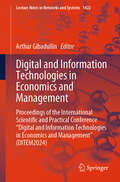- Table View
- List View
Nonbelievers, Apostates, and Atheists in the Muslim World
by Jack David Eller Natalie KhazaalNonbelievers, Apostates, and Atheists in the Muslim World offers a contemporary, cross-cultural look at nonbelief and nonreligion in Islam. Providing historical, conceptual, statistical, and ethnographic data on nonbelievers from Morocco to Egypt, Turkey, and Bangladesh, it explores the unique nature and challenges of nonreligion for Muslims.It includes 11 chapters by experts on nonbelief, nonreligion, and atheism in an array of Muslim-majority countries. The book features multiple disciplines and offers both ethnographic and statistical information on this important, growing, but neglected population. It explores the unique nature of nonreligion in Islam, illustrating that nonbelief is specific to a particular religious tradition. It also examines how ex-Muslims navigate complexities and dangers of their societies—especially for women—and how nonbelief and nonreligion do not equate to atheism or the total repudiation of religion or of Muslim identity.This book is an outstanding resource for scholars and students of nonbelief, atheism, secularism, religion, and contemporary Islam.Chapters 4 and 5 of this book are freely available as a downloadable Open Access PDF at http://www.taylorfrancis.com under a Creative Commons Attribution-Non Commercial-No Derivatives (CC-BY-NC-ND) 4.0 license
Cinematic Cartography: Scale, Analysis, Topography (Routledge Spatial Humanities Series)
by Chris LukinbealThis book uniquely bridges the conceptual gap between the history of geographic, cartographic thought, and film theory with the technological and cultural shifts that shaped the emergence of cameras and cinema.Adorned with illustrative figures, examples, and case studies throughout, the book explores how cinema lends itself to cartography and, in turn, how cartography relates to both the individual and collective experience of cinema. By using cartography to understand space and scale in film, the book moves away from textual analysis or representation analysis to focus on the locational attribution of the sites where the cinematic landscape is being produced. It contends that viewers of moving images are active players in a complex network of cultural and mental geographies.This volume is essential reading for students, scholars, and academics of cinematography, human, cultural, and social geography, cartography, and media studies, as well as those interested in these areas more generally.
Management of Head and Neck Surgery Complications: Pearls and Pitfalls
by Kwang-Jae Cho Jun-Ook ParkHead and neck anatomy is a complex area and densely populated by critical structures. Surgical complications after head and neck surgery are associated with significant morbidity and may even be fatal. Thus, a surgeon‘s knowledge of surgical complications is essential for successful outcome. This book provides a comprehensive guide to manage complications after head and neck surgery. It consists of pearl and pitfalls of experienced surgeons, evidence-based information and full-coloured photographs for managing possible complications after head and neck surgery. With the illustrative figures, This book will be a practical reference for otolaryngologists, head and neck surgeons, professional clinical staff, and medical students.
Peptide Synthesis: Methods and Protocols (Methods in Molecular Biology #2931)
by Waleed M. Hussein Mariusz SkwarczynskiThis fully updated second edition provides a variety of procedures for synthetically producing peptides and their derivatives, ensuring the kind of precision that is important for successful synthesis. Chapters explore techniques relevant to drugs and vaccines are explored, such as conjugation and condensation methodologies. Written for the highly successful Methods in Molecular Biology series, chapters include introductions to their respective topics, lists of the necessary materials and reagents, step-by-step, readily reproducible laboratory protocols, and tips on troubleshooting and avoiding known pitfalls. Authoritative and cutting-edge, Peptide Synthesis: Methods and Protocols, Second Edition aims to be comprehensive guide for researchers in the field.
Proceedings of the International Field Exploration and Development Conference 2024: Volume 7 (Springer Series in Geomechanics and Geoengineering)
by Jia’en LinThis book compiles selected papers from the 14th International Field Exploration and Development Conference (IFEDC 2024). The work focuses on topics including Reservoir Exploration, Reservoir Drilling & Completion, Field Geophysics, Well Logging, Petroliferous Basin Evaluation, Oil & Gas Accumulation, Fine Reservoir Description, Complex Reservoir Dynamics and Analysis, Low Permeability/Tight Oil & Gas Reservoirs, Shale Oil & Gas, Fracture-Vuggy Reservoirs, Enhanced Oil Recovery in Mature Oil Fields, Enhanced Oil Recovery for Heavy Oil Reservoirs, Big Data and Artificial Intelligence, Formation Mechanisms and Prediction of Deep Carbonate Reservoirs, and other Unconventional Resources. The conference serves as a platform not only for exchanging experiences but also for advancing scientific research in oil & gas exploration and production. The primary audience for this work includes reservoir engineers, geological engineers, senior engineers, enterprise managers, and students.
±1100kV UHV DC Power Transmission Technology
by Zehong LiuThis book focuses on the latest development of ultra-high-voltage direct current (UHV DC) technology, which is one of the most advanced power transmission technologies in the world. Both principles, key technologies, and engineering practice have been addressed, with more weight placed on engineering practice of the Zhundong-Wannan ±1100 kV UHV DC power transmission project. This mega project set a series of world records such as the highest voltage, the largest capacity, the longest distance and so on. ±1100 kV UHV DC power transmission technology can realize the large-scale and long-distance optimal allocation of clean energy, which is of great significance for guaranteeing energy security, and promoting low-carbon transformation. This book is the first monograph in the related field, which comprehensively exhibits the principles and key technologies, the equipment of the converter station, the general layout of converter station, key technologies of construction, and engineering commissioning. It can benefit researchers and engineers engaged in the construction, design and operation of high voltage power transmission projects. The basis of English translation of this book, originally in Chinese, was facilitated by artificial intelligence. The content was later revised by the author for accuracy.
The Origins of Representations: Cognitive and Brain Development (Studies in Applied Philosophy, Epistemology and Rational Ethics #73)
by Athanassios RaftopoulosThis book provides an account of the origins and development of iconic and symbolic representations in our evolutionary lineage, the hominis, and of the cognitive capacities and brain structures that support such a development. At first, it introduces the three basic types of signs, such as indices, icons, and symbols, used by most animals, including apes and hominins, for communicating and interacting with the environment, and discusses the differences among them. In turn, it explains the evolution from non-representational indices to iconic, first, and then symbolic representations in terms of the evolution of the cognitive capacities in our lineage. The main emphasis is on the cognitive capabilities that support the use of these types of signs, such as attention, executive functions, and working memory, among others. The discussion centers on determining these capacities, and how and why these capacities evolved in the phylogenesis of hominids. Further, evidence from psychology and neuroscience are used to shed light on the development of these capacities in hominins, together with knowledge about the basic brain structures supporting these capacities, such as the prefrontal cortex, and their development at the ontogenetic and phylogenetic scales. All in all, this book offers a theory of the development of our representational arsenal from its beginnings characterized by simple signs to its modern form made of highly abstract symbols.
Fußballkompetenz und Fußballexpertise im modernen Fußball: Eine umfassende Analyse der Akteure, ihrer Fähigkeiten und deren Interaktionen
by Nicolas FinkDieses Fachbuch beleuchtet die vielfältigen Dimensionen der Fußballkompetenz und -expertise. In detaillierten Kapiteln werden die Rollen und Herausforderungen der verschiedenen Akteure – Spieler, Trainer, sportliche Leiter, Funktionäre, Journalisten sowie Fans – untersucht und gezeigt, wie diese zur Entwicklung des Fußballs beitragen. Dabei wird jeweils ein dynamisches Kompetenzmodell eingeführt, das die fachspezifischen, sozialen und kognitiven Fähigkeiten der jeweiligen Akteure in den Mittelpunkt stellt und verdeutlicht, wie diese Kompetenzen in einem hochkomplexen Umfeld entstehen und unter flexiblen Rahmenbedingungen wachsen. Das Buch bietet nicht nur Einblicke in die Entwicklung individueller Kompetenzen, sondern thematisiert auch die gesellschaftliche Bedeutung des Fußballs als kulturelles und wirtschaftliches Phänomen. Es zeigt auf, wie eine effektive Zusammenarbeit und Interaktion zwischen den Akteuren langfristige sportliche und organisatorische Erfolge sichern können. Ein wertvolles Werk für alle, die tiefer in die Strukturen und Anforderungen des modernen Fußballs eintauchen möchten – ob als Praktiker, Entscheidungsträger oder Fußballbegeisterte.
Collaboration in Knowledge Discovery and Decision Making: Third International Workshop, DECISIONING 2024, Pereira, Colombia, June 4–6, 2024, Proceedings (Communications in Computer and Information Science #2369)
by Vanessa Agredo-Delgado Pablo H. Ruiz Carlos Augusto Meneses EscobarThis book CCIS 2369 constitutes the proceedings of the Third International Workshop on Collaboration in Knowledge Discovery and Decision Making, DECISIONING 2024, held in Pereira, Colombia, during June 4–6, 2024. The 18 full papers were carefully reviewed and selected from 54 submissions. These papers explore recent advances in collaborative decision making and knowledge discovery, addressing topics including data analysis, artificial intelligence, decision models and industrial applications.
Pampean Lakes
by Juan Antonio Morales Daniel Ariztegui Eduardo Luis Piovano Silvina StutzThis book is for advanced students, researchers and professionals from Earth and Environmental Sciences. The Argentinean Pampa plain is an extensive region of ca 673,000 km2 between 30°S and 38°S in South America. The region encompasses a large number of lakes (>50,000) of highly variable sizes. Pampean lakes have been very sensitive to past and recent climatic change. Thus, paleolimnological research across the Pampa plain provides unique insights into regional environmental variability since the Late Pleistocene up to the most recent hydroclimatic changes. These lakes are sensors of both the documented increase in precipitation that occurred after the 1970´s seventies as well as substantial changes in land use It compiles the most outstanding information of the region for the last 30 years regarding ecological aspects, changes in land-use processes and their impact on water bodies, paleolimnological reconstructions, archeology, hydroclimatic variability and associated human dimension. This knowledge provides environmental information that is fundamental to develop integrated water management projects.
COVID-19 Vaccination and Dermatological Diseases (Updates in Clinical Dermatology)
by Howard Maibach Esraa M. AlEdaniThis book offers comprehensive coverage on the effect of COVID-19 vaccinations on dermatological diseases. It provides up-to-date information on dermatological disease flare-ups that happen after COVID-19 vaccination. Chapters addresses the role of Covid-19 and its vaccination in common dermatological diseases, whether the patients already had the disease and it complicated after covid-19 or its vaccination, or whether the patient developed new episode of the disease after the pandemic. The last chapter of this book discuss the role of tele-medicine especially tele-dermatology in the Covid-19 era, and how dermatologists transformed to the internet world in the pandemic, including its advantages and disadvantages.COVID-19 Vaccination and Dermatological Diseases is a valuable resource for practicing dermatologists, dermatology residents, and medical students, as well as general practitioners.
Second International Handbook on the Demography of Sexuality (International Handbooks of Population #14)
by Amanda K. Baumle Zelma Oyarvide TuthillA decade after the publication of the first International Handbook on the Demography of Sexuality, there have been fundamental shifts in how we measure sexual and gender identities and the breadth of available population-level sexuality data. The chapters in this second edition of this handbook provide guidance on methodological approaches involved in studying population sexuality, as well as insight into the ways that sexuality shapes key demographic outcomes. Chapters examine how we measure sexual identities and behaviors on surveys, sexuality changes across the life course, international perspectives on sexual behaviors and identities, and the ways that sexual identities shape families, labor market experiences, and health outcomes. Despite these developments, we still know relatively little about key demographic questions related to fertility and migration for sexual minorities, as well as about understudied topics of sexuality that fall outside of risk-focused analyses. In particular, much of our understanding of sexuality has been motivated by controlling the spread of sexually transmitted infections or adolescent pregnancies, rather than understanding motivations for sexual interactions, such as pleasure. Accordingly, although the research set forth in this book provides insight into existing knowledge of sexual behavior and of sexual minority populations, the chapters also point researchers and policymakers toward needed areas of research and data collection.
Theories and Application in Maize-Soybean Strip Intercropping System
by Feng Yang Wenyu Yang Yushan WuThis book provides comprehensive coverage of the advances in theoretical and technical research on the maize-soybean strip intercropping system. Intercropping plays an important role in producing more yields for those countries with a large population and limited arable land, especially for cereal and legume intercropping systems. Maize and soybean are best partners under cereal and legume intercropping conditions. The chapters feature the latest developments in intercropping research and cover such topics as the mechanism of resource-efficient utilization, determination of the optimum planting geometry for maize–soybean strip intercropping system according to the yield advantage, and the application of agricultural machinery for intercropping mechanization. The volume also features the response of intercrops to a light environment based on the methods of physiological and molecular biology, laying the groundwork for future advances in variety breeding and crop field configuration. This book will serve as an invaluable reference for agricultural production, teaching, and research of the cropping system in the future.
How to Manage Acquired Bleeding Disorders
by Giancarlo CastamanThis "transversal" book is a valuable resource not only for hematologists but also for clinicians who may encounter acquired bleeding situations that they must manage, even if they lack access to a bleeding disorder specialist. The discussed conditions are relatively prevalent and can lead to frequent bleeding complications of varying severity, such as bleeding during anticoagulant therapy. The book also covers the significance of disseminated intravascular coagulation, another common complication that varies in severity based on the underlying condition that triggered it. This book fills a void by addressing these common complications in a single resource that will prove beneficial to medical professionals in training and specialists in various medical fields who treat patients with specific clinical condition.
Digitalisierung als Handlungsfeld Nachhaltiger Entwicklung in der Verpackungsindustrie
by Christina Ilg-MüllerDer Band zeigt in zwei Phasen einer empirischen Untersuchung, wie Digitalisierung als Handlungsfeld Nachhaltiger Unternehmensführung in der Verpackungsindustrie zum Katalysator für Nachhaltige Entwicklung in der Gesellschaft werden kann. Das Hauptaugenmerk der beiden Untersuchungsphasen liegt auf der Verknüpfung des digitalen Transformationsprozesses mit Nachhaltigkeitszielen. Es geht konkret darum, adäquate Prozesse auszuwählen, um definierte Nachhaltigkeitsziele zu erreichen. Die Gestaltung Nachhaltiger Unternehmensführung wird vom Bild der Begrenzung des Wachstums losgelöst und ein Leitbild dargestellt, das für Wirtschaft, Umwelt und Gesellschaft kontinuierlichen Mehrwert erzeugt.
Introduction to Public Health and Research: Essential Concepts
by Priyanka R. Jain Umber S KhanThe book is a comprehensive text that will deal with the foundation and fundamental principles, including recent advancements, in the field of public health research. The book is designed to equip researchers, health care professionals, policymakers and students with knowledge and tools necessary to effectively address both the current and emerging public health challenges. The book covers a wide range of topics including epidemiology, statistics, economic assessment and research methodologies, all emphasizing a global perspective on promoting health and well-being. A unique feature of this publication is its focus on Oral Health research in Southeast Asia, with each chapter concluding with relevant research examples from the region. This makes it the first book of its kind dedicated to this area of study.
Water Policy in New Caledonia: Participative Co-building of Water Governance in a Decolonization Process (Global Issues in Water Policy #32)
by Séverine Bouard Caroline LejarsIn 2018, a few months before the first referendum for full sovereignty, the government of New Caledonia launched the co-design of the country's first water policy based on a broad consultation that involved 1 out of 600 New Caledonians, the locally so-called &“Shared Water Policy&”.The book both presents and assesses the original and broad participatory process used to build the new water policy. It does so by crossing different points of view (government, local managers and customary authorities). The book is also devoted to bridging the gap between customary land studies and water policy. It seeks a way to weave water representations and customary water management practices into the new policy. This experience in a unique decolonisation complex context will inspire policy makers, academics, managers working on participatory methodologies for more inclusive water policy and governance processes, especially in countries where indigenous populations and legal pluralism orders coexist.
The Chinese Particle De (SpringerBriefs in Chinese Grammar #2)
by Quan WanThis book indicates that the nature and function of de is one of the core issues in the study of Chinese grammar. There are many related studies, which are not only a long-term controversial and difficult problem, but also a theoretical issue that constantly invites the renewal of research methods. This book mainly focuses on the following aspects, summarizes the achievements of the previous studies, and expounds the possible research directions in the future: 1. How many morphemes can de be analyzed into? 2. Is the basic function of the attributive containing the word de qualitative or descriptive? 3. What determines the presence and distribution of de? What is the Reference-Object Construction? 4. Can the theory of endocentric construction be used to analyze de? 5. Is de a nominalizer? What is the relationship between the self-designation and the transferred designation of de? How to treat the construction "N de V"? 6. Is de a tense-aspect auxiliary in the event sentences "V de O" and "VO de"? What is the function of the sentence final de? Is de a modal particle? 7. The issues of pseudo-attributive vs. quasi-attributive in understanding de.
Agroforestry: Nature Based Solution for Climate Change and Food Security
by Subhabrata PandaThis book explores the diverse potential of agroforestry systems in transforming agricultural practices to sustainably produce food, feed, and materials for supporting community livelihoods. Agroforestry stands out for its ability to detoxify contaminants in soil, water, and plants, thereby providing high quality and affordable food and feed. The topics in this book include the cultivation of plant-based food and feed sources within the spaces between trees, known as alley crops, and the integration of fruit trees, which diversify nutritional sources. Agroforestry not only enhances food security but also bolsters livelihood security by adding value to agroforestry products, from farming plots to the final food products, and through associated animal husbandry and fishery practices. The rapid growth of trees in agroforestry systems offers lucrative opportunities, such as timber production, which alleviates pressure on natural forests and aids in forest conservation and climate change mitigation through carbon sequestration. The book highlights how agroforestry aligns with the United Nations' 17 Sustainable Development Goals (SDGs). The book will be a valuable resource for students, researchers, and professionals in the fields related to soil, water, sustainable agriculture, and natural resource conservation. Additiona
Climate-Smart Agricultural Technologies: Approaches for Field Crops Production Systems (Sustainability Sciences in Asia and Africa)
by Akbar Hossain Biswajit Pramanick Shiv Vendra Singh Sagar Maitra Silvia CellettiThis book addresses the technologies that can be employed to tackle the challenges of global food security. Several recent studies have reported the significant impact of changing climate on the agricultural production, thus posing a challenge in achieving global food security. Thus, to mitigate these challenges there is an urgent need to develop approaches that may be helpful for the sustainability of food production. These approaches are based on three objectives: (i) sustainably increasing agricultural productivity to support equitable increases in farm incomes, food security, and development; (ii) adapting and building the resilience of food systems to climate change; and (iii), where possible, reducing GHGs emissions from agriculture. This book provides updated information for these climate-smart agricultural technologies that hold high potential to increase productivity, improve resilience, and provide efficient resource utilization. This book is a valuable resource for undergraduates, postgraduates, researchers, professors and policymakers in the field of agriculture, botany and agriculture extension functionaries.
Wirtschaftsstandort Österreich: Wettbewerbsfähigkeit und nachhaltige Entwicklung
by Anna Burton Michael Peneder Thomas Url Benjamin Bittschi Angela KöpplDieses Buch bietet einen umfassenden Überblick über die Wettbewerbsfähigkeit und nachhaltige Entwicklung Österreichs im internationalen Vergleich. Die Untersuchung folgt dem Drei-Säulen-Modell der Wettbewerbsfähigkeit „Beyond GDP&“, das neben Kennzahlen zur wirtschaftlichen Leistungsfähigkeit auch Aspekte des sozialen Ausgleichs und der ökologischen Transformation einbezieht. Die Untersuchung liefert differenzierte und faktenbasierte Einsichten über die aktuelle Dynamik und Herausforderungen des österreichischen Wirtschaftsstandorts. Sie basiert auf dem WIFO-Radar der Wettbewerbsfähigkeit sowie einer Hintergrundstudie aus dem Jahr 2023. Für dieses Buch wurden die Kapitelstruktur und die Auswahl der Indikatoren überarbeitet sowie alle Datensätze aktualisiert und neu ausgewertet.
Fundamentals of Medicine for Biomedical Engineering
by Hamid HosseinzadehThis concise book explains the basics of medicine in simple language for biomedical engineering students. The core medical topics covered include terminology, anatomy, histology, and physiology. The book highlights the engineering aspects of basic medicine and conveys the key information biomedical engineers need to know about the human body, avoiding technical medical language. There are many engineering discussions in the book, connecting basic medicine to the key components of biomedical engineering. This is an essential textbook for all biomedical engineering students and students in other engineering disciplines who require medical knowledge.
Proceedings of the International Field Exploration and Development Conference 2024: Volume 5 (Springer Series in Geomechanics and Geoengineering)
by Jia’en LinThis book compiles selected papers from the 14th International Field Exploration and Development Conference (IFEDC 2024). The work focuses on topics including Reservoir Exploration, Reservoir Drilling & Completion, Field Geophysics, Well Logging, Petroliferous Basin Evaluation, Oil & Gas Accumulation, Fine Reservoir Description, Complex Reservoir Dynamics and Analysis, Low Permeability/Tight Oil & Gas Reservoirs, Shale Oil & Gas, Fracture-Vuggy Reservoirs, Enhanced Oil Recovery in Mature Oil Fields, Enhanced Oil Recovery for Heavy Oil Reservoirs, Big Data and Artificial Intelligence, Formation Mechanisms and Prediction of Deep Carbonate Reservoirs, and other Unconventional Resources. The conference serves as a platform not only for exchanging experiences but also for advancing scientific research in oil & gas exploration and production. The primary audience for this work includes reservoir engineers, geological engineers, senior engineers, enterprise managers, and students.
Wastewater Treatment Plants: Processes, Assessment, Design and Operation (Water Science and Technology Library #130)
by Vijay P. Singh Shalini Yadav Ram Narayan Yadava Salah Souabi Abdelkader AnouzlaThe book provides technical information on the operation of wastewater treatment plants and strategies to be adopted for the design of plants, assessment, processes and technologies for wastewater treatment and reuse for irrigation and industry, including protecting the environment. It discusses the crucial parts that science, technology, and innovation play in formulating, implementing, and administrating wastewater treatment policy. It highlights the challenges that must be overcome to successfully adopt the wastewater treatment infrastructure regulations and provides some answers. It investigates how the operation of wastewater treatment plant technology can be used in a wide variety of fields, apart from other on-the-shelf publications on the market. It also delves into the core concepts of the operation of wastewater treatment plants. It explores how these concepts can be modified to fit a variety of contexts and uses. Applications such as managing facilities, dealing with pandemics, urban wastewater treatment and reuse, farming, and other applications are included in this book. Consequently, this book's content is engaging, and it will pique the interest of a diverse audience of readers who come from a wide variety of professional backgrounds. This book will be helpful to industrialists, researchers, entrepreneurs, professionals, planners, policymakers, environmental engineers, and others interested in the operation of wastewater treatment system management strategies through the application of breakthroughs in the operation of wastewater treatment plants. The book constitutes a database that can help companies guide the choice of a treatment technique considering operating and investment costs. Similarly, the book presents several solutions to problems encountered during the operation of treatment plants, particularly the challenges encountered at the biological and physicochemical treatment levels. The book also illustrates some design and sizing methods and methods for good practice to organize the extension of a treatment plant, if necessary, properly. The book also deals with options for resource recovery and wastewater governance, thus establishing a clear link between the performance of a treatment plant and obtaining treated water that
Digital and Information Technologies in Economics and Management: Proceedings of the International Scientific and Practical Conference "Digital and Information Technologies in Economics and Management" (DITEM2024) (Lecture Notes in Networks and Systems #1422)
by Arthur GibadullinThis book addresses issues of networks and systems related to the use of information technologies in economics and management of various sectors. The IV International Scientific and Practical Conference "Digital and Information Technologies in Economics and Management" (DITEM2024) was held on November 20-22, 2024. A distinctive feature of the conference is that it featured presentations by authors from Korea, Japan, Turkey, Azerbaijan, Turkmenistan, Uzbekistan and Russia. Researchers from different countries presented the process of transition to new information technologies of various network and system structures and sectors. The book made it possible to develop new scientific recommendations on the use of information, computer, digital and intellectual technologies and networks in industry and fields of activity that can be useful to state and regional authorities, international and supranational organizations, the scientific and professional community.

